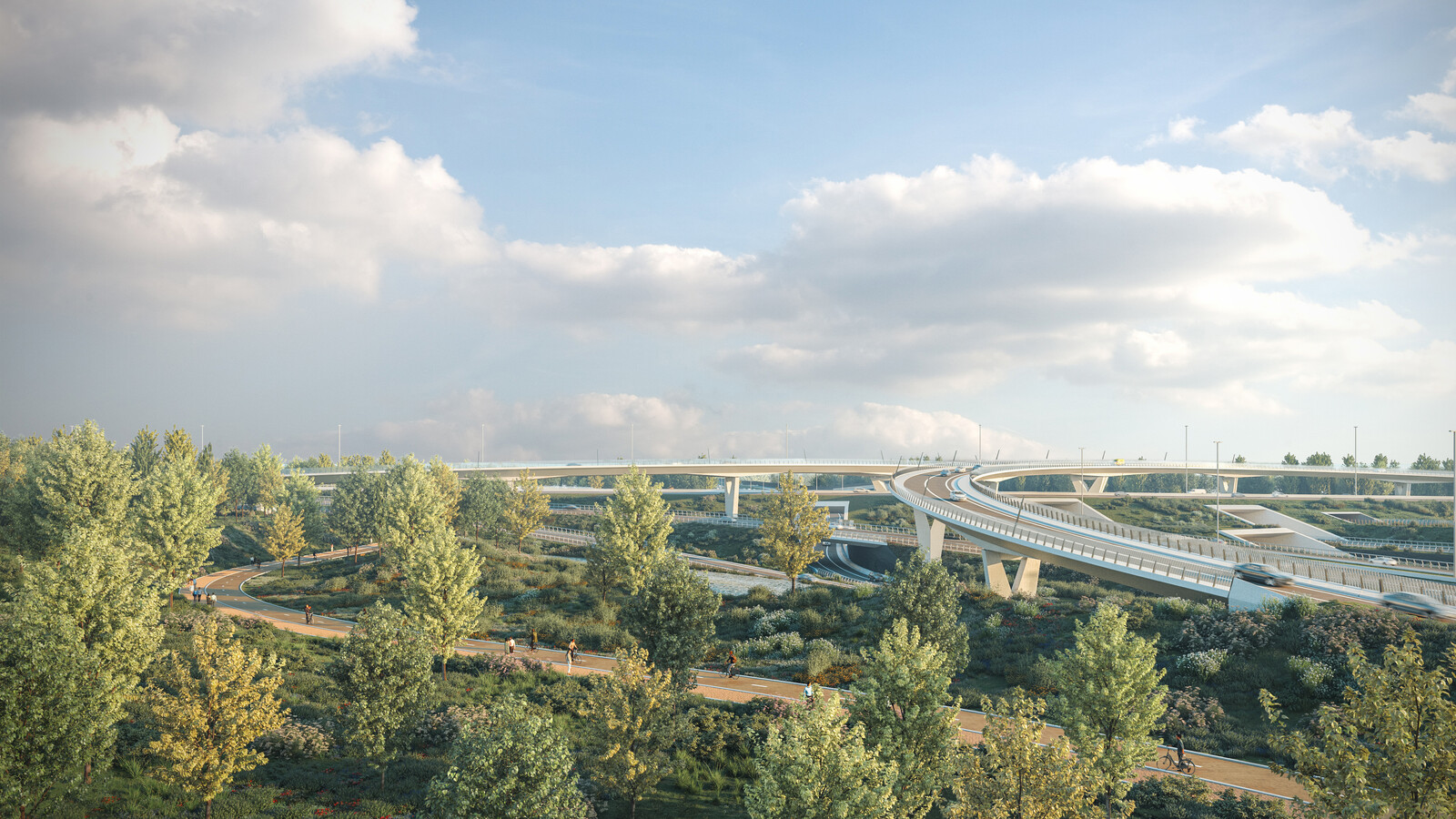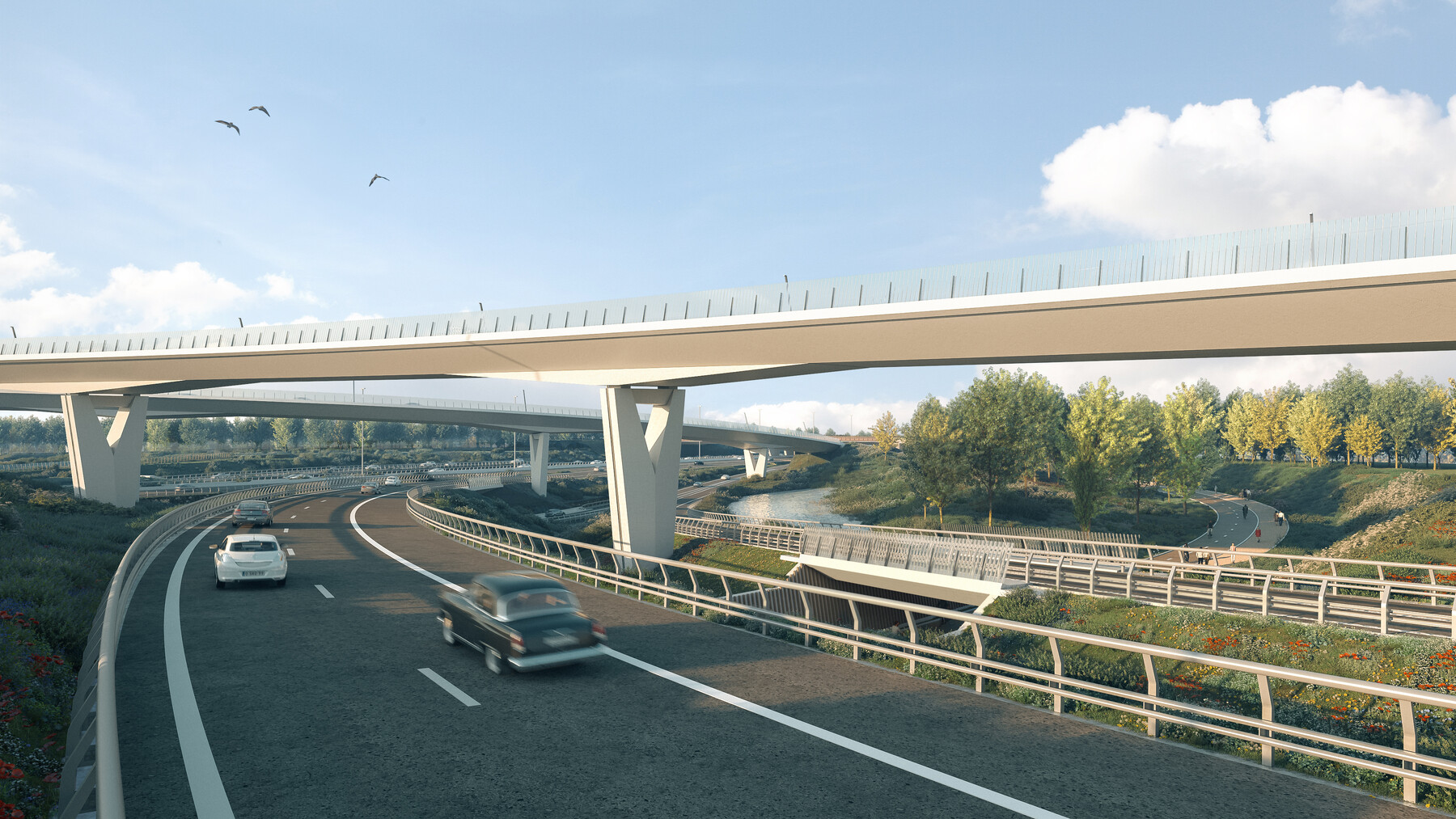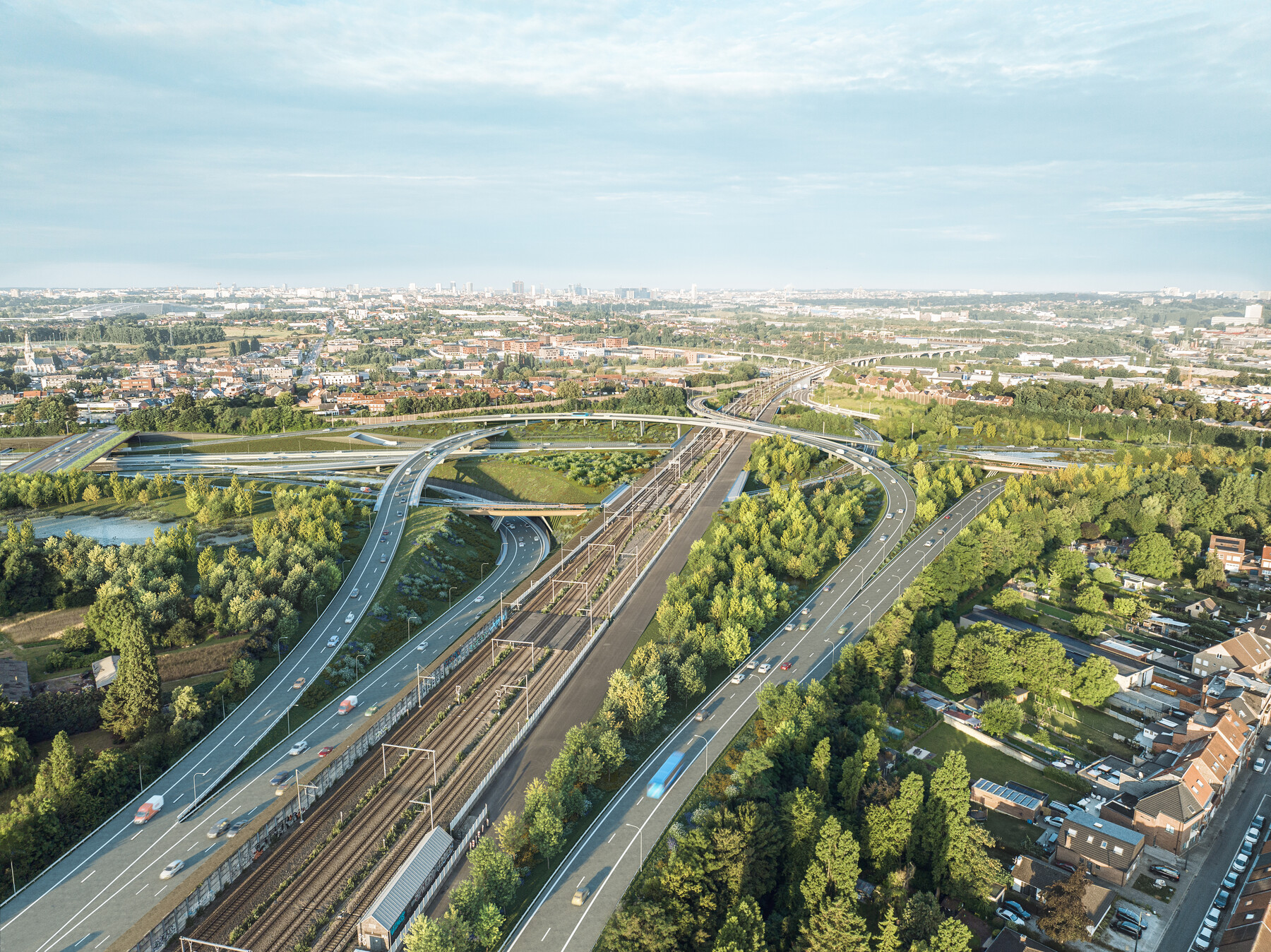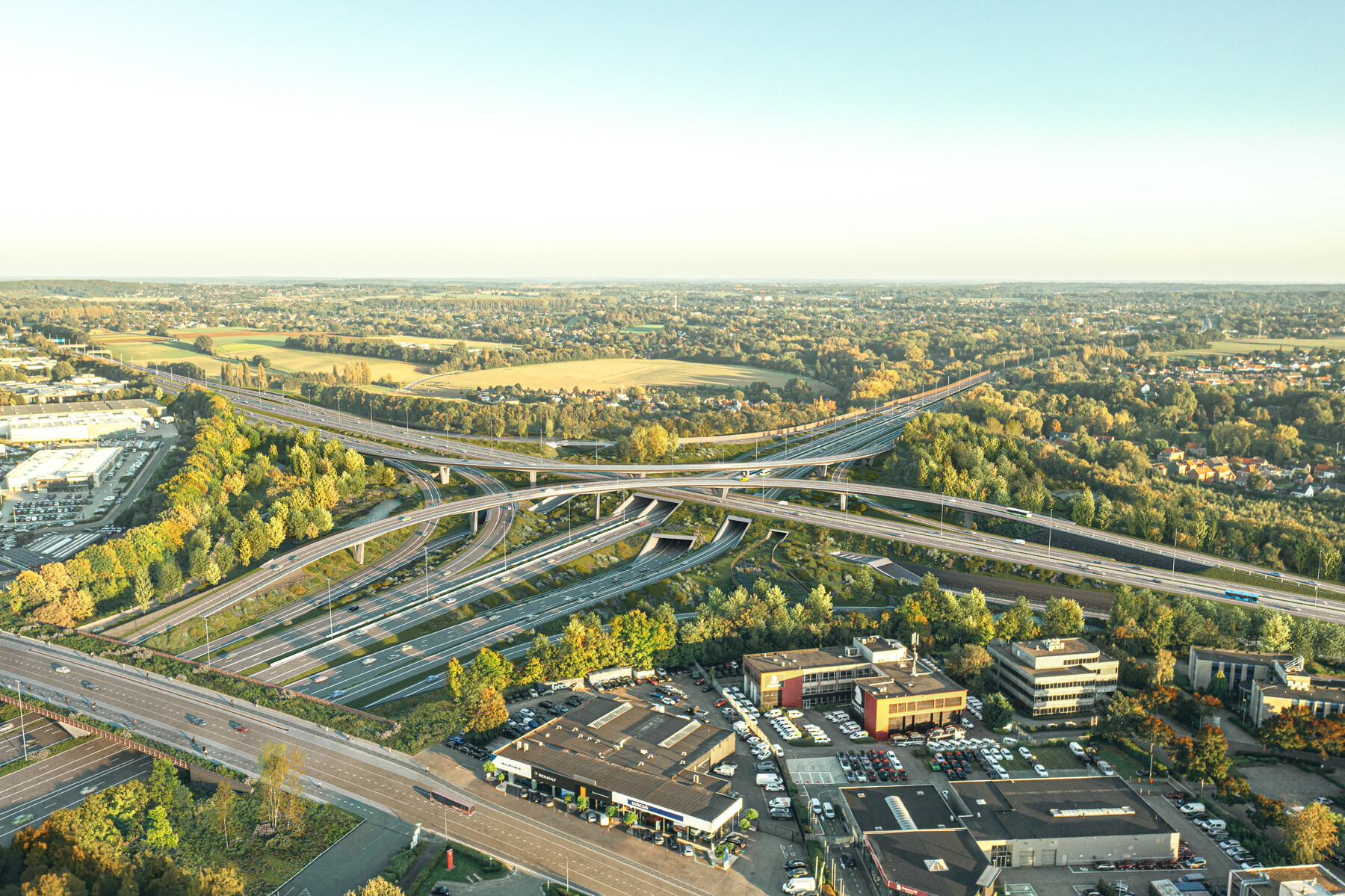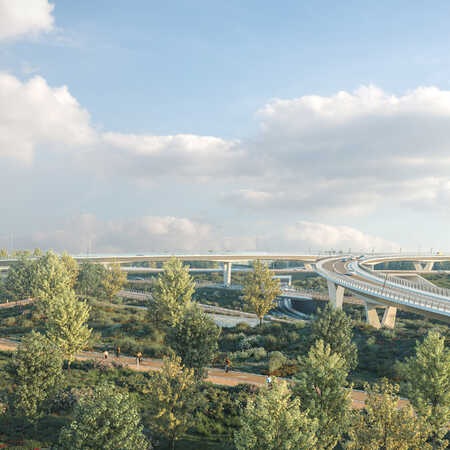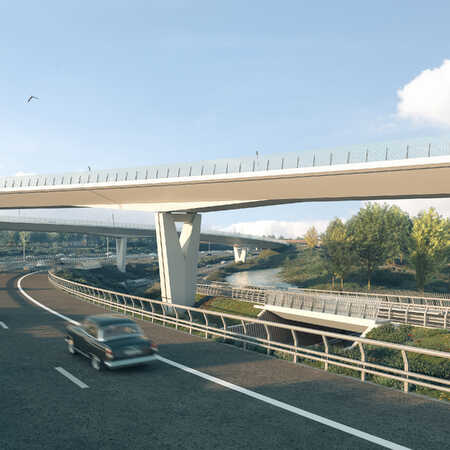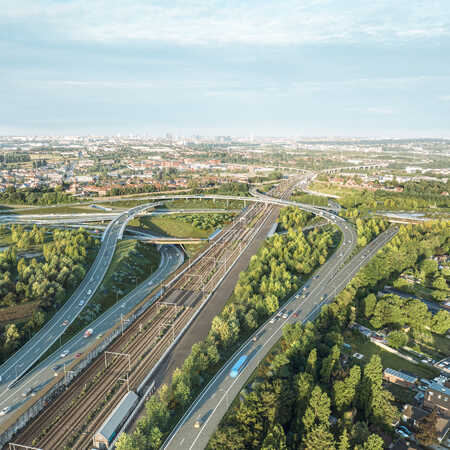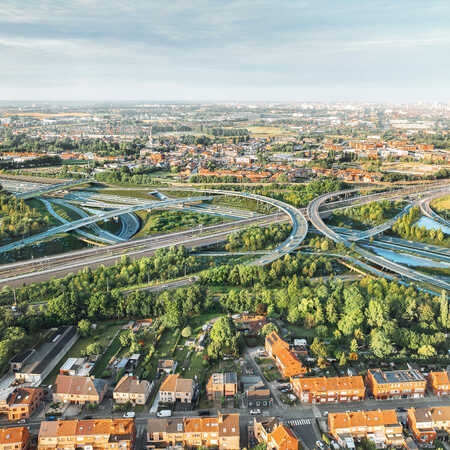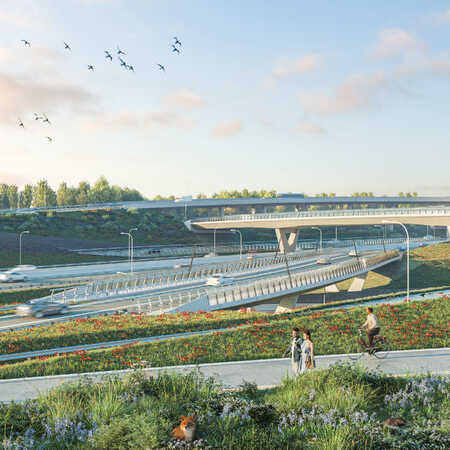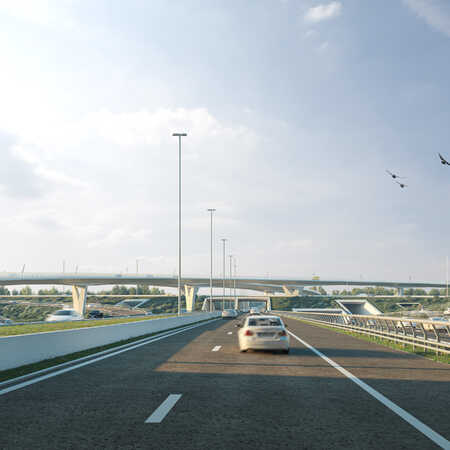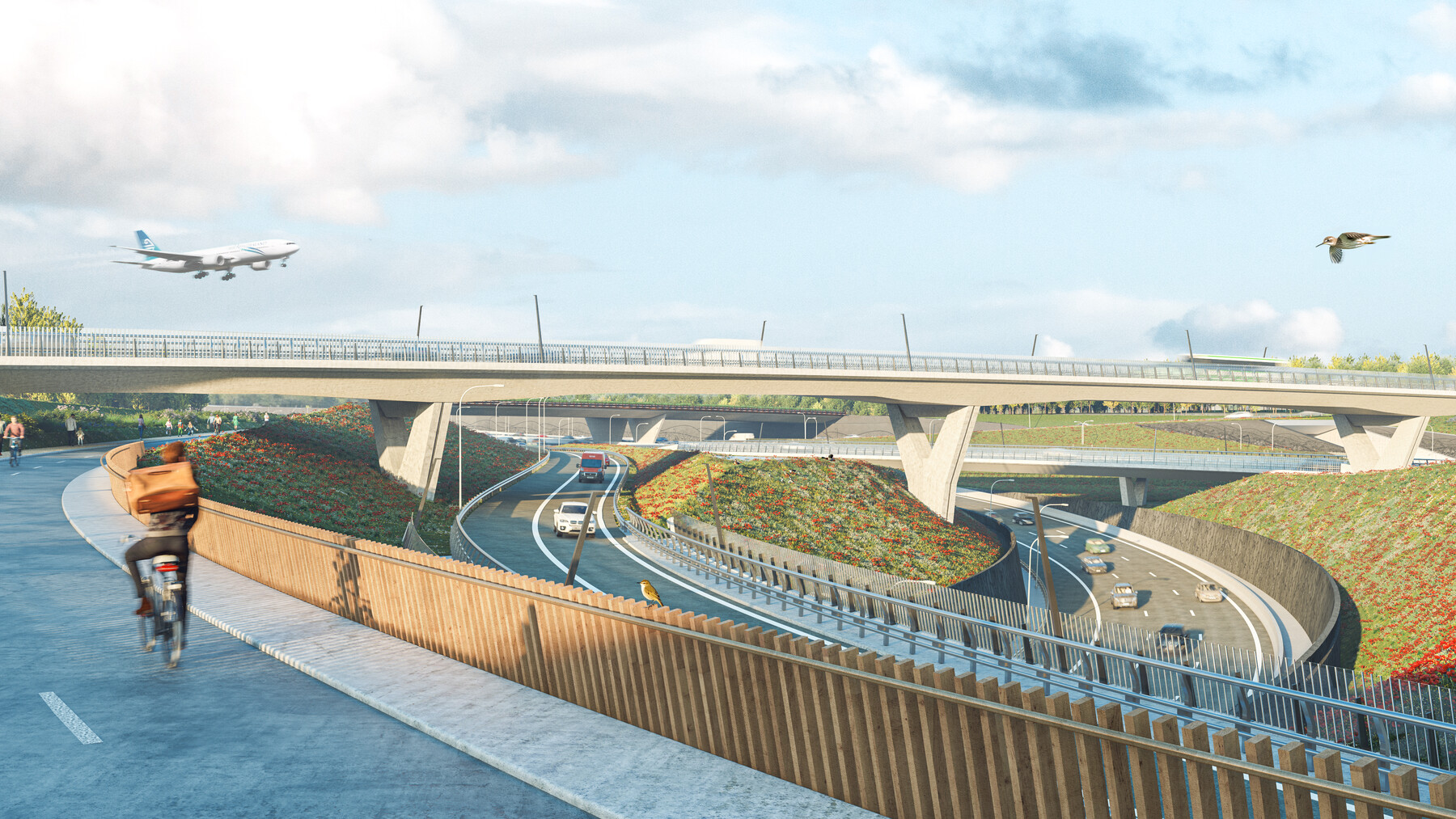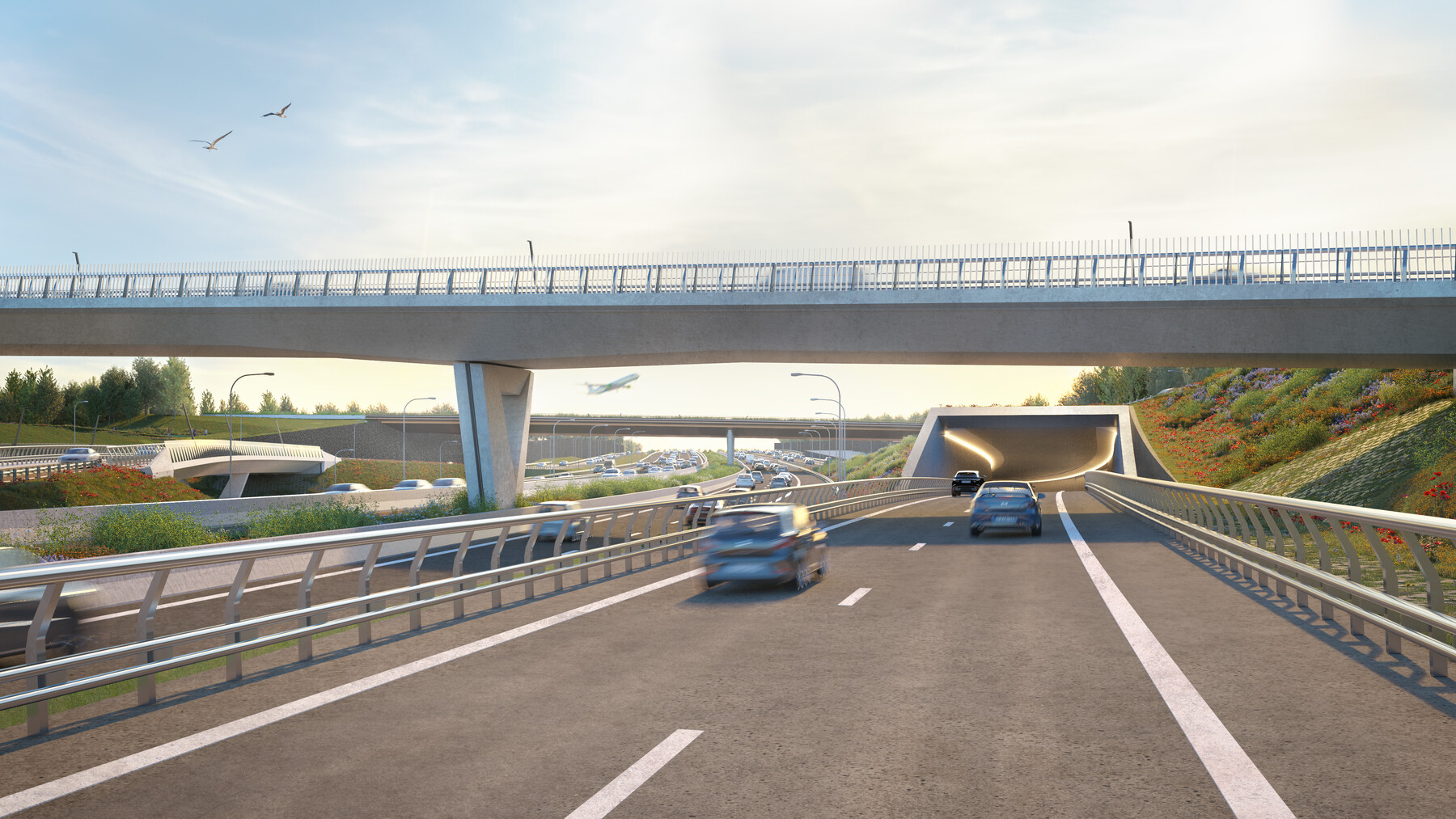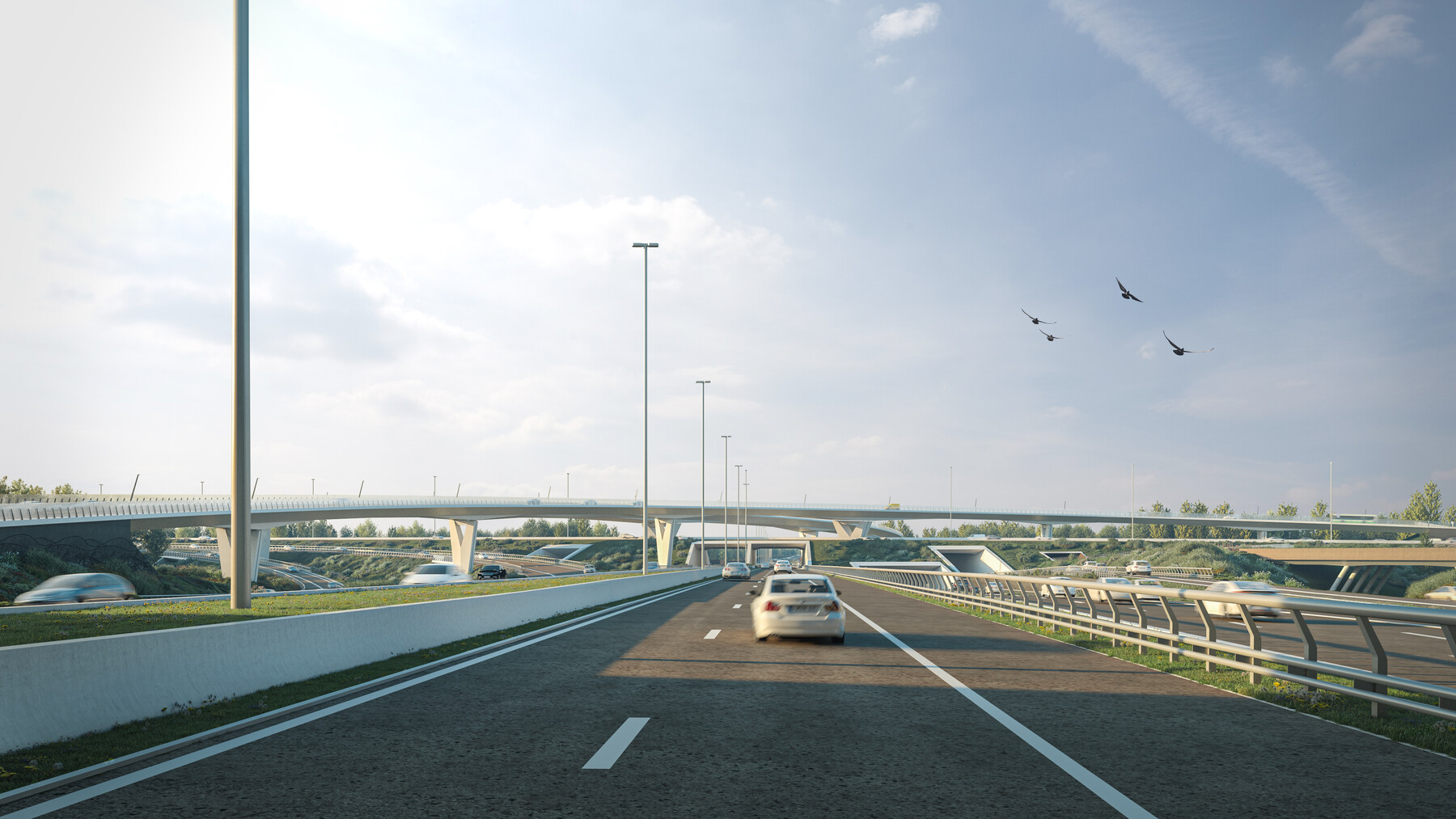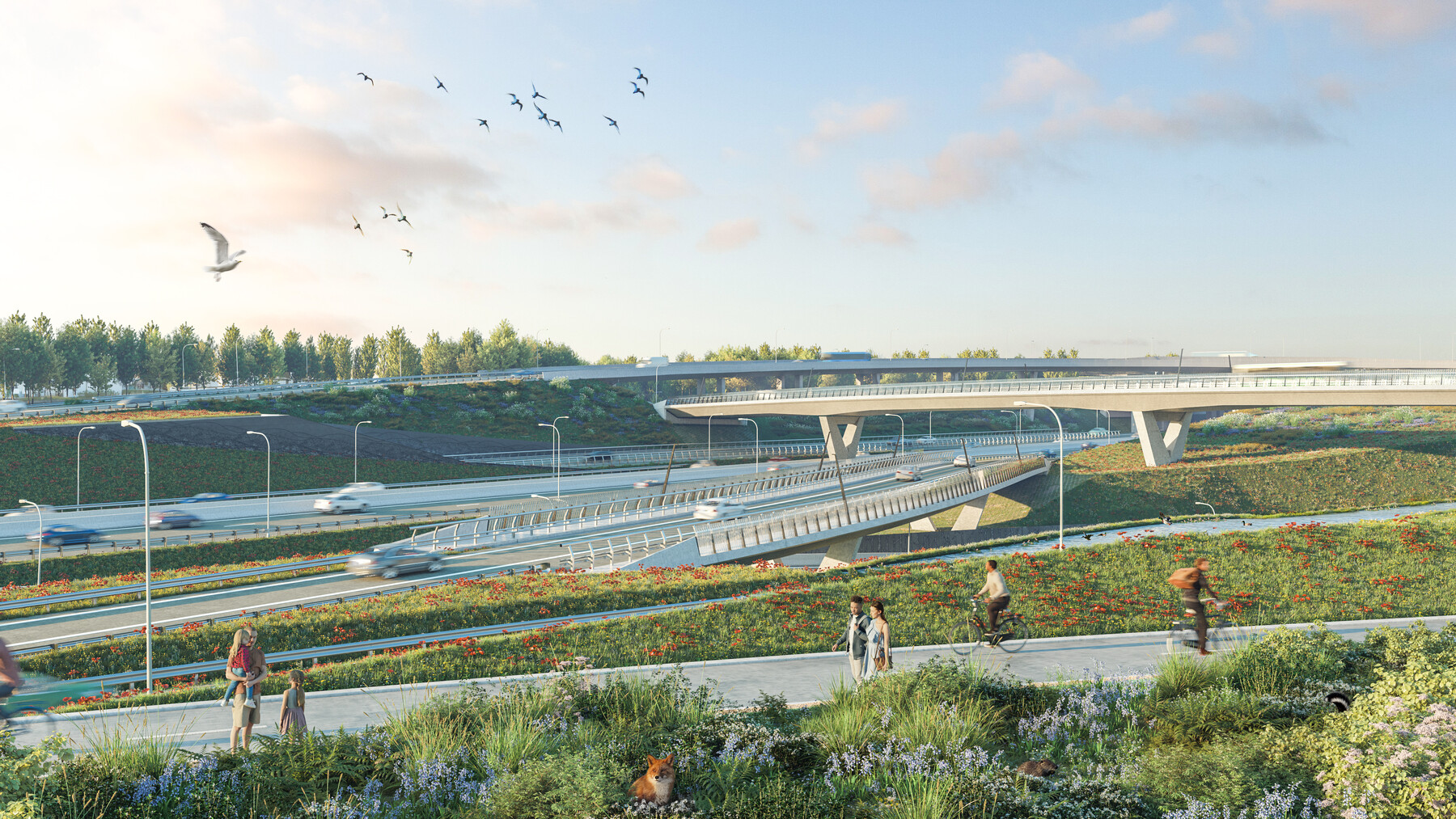The Ring around Brussels needs a more legible infrastructure and a better and safer flow of traffic. And all without increasing the space it occupies, even reducing it, as at the St Stevens-Woluwe intersection. A major challenge. But the renovation presents further opportunities too. One important goal is to reduce pressure on the road network and therefore also on the Ring around Brussels. So an extensive network of public transport, such as Brabantnet and the airport tram, a network of bicycle highways and the Ring cycle path can make a considerable contribution.
Four unique compact intersections
In the four compact intersections designed by ZJA, local and through traffic, bicycle and tram traffic, and ecological corridors are cleverly integrated on four levels, by the use of tunnels, embankments and sunken roads. This presents an opportunity to give space back to the surroundings, to lay direct connections and to allow extensive green buffers to develop around the intersections.
This approach is in stark contrast to the outdated intersections built fifty years ago far outside the city, which were based on the turbine model: broad roadways that circled each other in two layers on tall pillars. That design demanded a lot of space and not only created unnecessary noise pollution but formed a barrier to local traffic.
Gallery
Traffic junctions integrated into the landscape
The traffic intersections that ZJA designed are as far as possible integrated into the surrounding landscape, like the water-filled valley at Groot-Bijgaarden). The, or the historic green route between the Royal Palace and the Meise botanical gardens at Strombeek-Bever (A12). The same goes for the wooded environment at Machelen (E19) and the start of the hill country of Flemish Brabant at St Stevens-Woluwe (E40).
Integrated design based on parametric modules
To achieve this epitome of compact integration, the designers at ZJA went to work as follows. First an initial design was made for each of the elements, a module that is adjustable and scalable as a parametric model. Think of flyovers, embankments, and various types of tunnels and supports. For each intersection, as part of an interdisciplinary collaboration, these elements were adjusted and slotted together step by step, using alignments in the form of 3D road axes. This made it possible to take efficient account of the unique complexity of the circumstances, and the ‘compact intersections’ acquired their markedly integrated form.
At each junction, these elements were gradually adjusted and integrated through an interdisciplinary collaboration using alignments in the form of 3D axes. This allowed for efficient consideration of the unique complexity of circumstances, resulting in the distinctive integrated form of the 'compact junctions.'
As little visual clutter as possible
Both for road users and for the surrounding area, it is important to create as little visual clutter as possible between the roadway and the landscape beyond. The flyovers have flowing lines that continue on into the landscape. The edges of the roadways are slimmed down, making them light and elegant. In the spaces between the supports, too, there needed to be regularity and calm. The supports are forked and slimmer towards the base, so that they merge better into the landscape. Sloping columns reflect the nearby hillsides. For each intersection, retaining walls were developed in a dark architectonic concrete with a motif that refers to the landscape (woodland, hill, water, park).
Calm road design
The noise barriers are transparent and have vertical supports and no horizontal lines. The tunnels too need to make a safe and peaceful impression, and they are designed in such a way that they produce a gradual transition from light to dark. The front walls are slightly tilted to reflect the light. From the integration of the parametrically formulated modular elements, a series of four unique, optimally compact intersections emerged.
Cycle highways as part of the Ring
The modernization of the Ring around Brussels involves more than car traffic alone. To future-proof mobility in and around Brussels, public transport and bicycle traffic are also important. So a network of bicycle highways for commuters, visitors and local residents is also being built.
Such connections are attractive only if they are fast and comfortable, run through green zones as far as possible and suffer little disturbance from car traffic. So a comparable design process began to integrate the bicycle highways into their surroundings. A family of modular elements, adapted to the local situation, produced coherence and optimal integration.
For cyclists the experience of the space is of great importance. A view of the landscape, daylight in the tunnels, the sense of pressure from car traffic, the gradient of the viaducts and the use of materials and colours all affect the quality of the design. For the bicycle highways a palette of naturally colouring materials was chosen that blends beautifully into the landscape and that is based broadly speaking on weatherproof steel, wooden slats and gabions.
Architect: ZJA
Principal: De Werkvennootschap
Client ZJA: (Sweco, Arcadis, ZJA, Frank van Hulle, Cluster en Mint)
Year: 2017 - ongoing
Visuals: Surrend3r
Project: #1018
Related
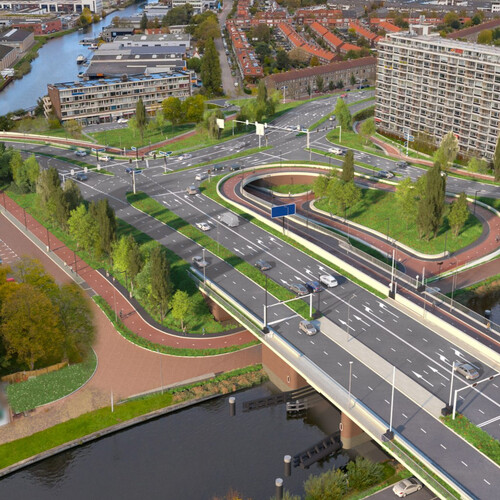
Definitive contract for expansion of N206 Europaweg Leiden
The team of Boskalis, architectural studio ZJA and BoschSlabbers landscape architects has been given the definitive contract for the N206…
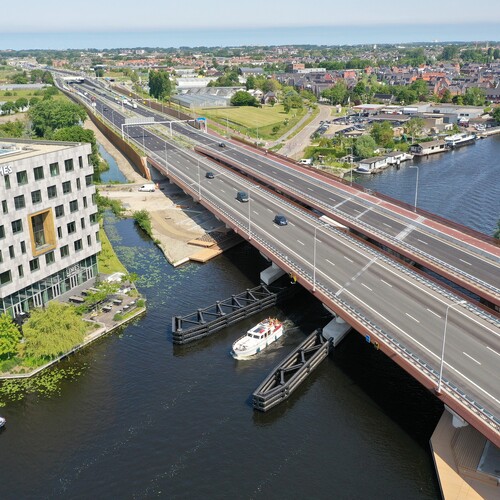
N206 Tjalmaweg, Katwijk - Leiden
Green road with Roman past
The provincial road N206 stretches from Leiden to the coast, cutting through the open landscape of the former military airbase Valkenburg…
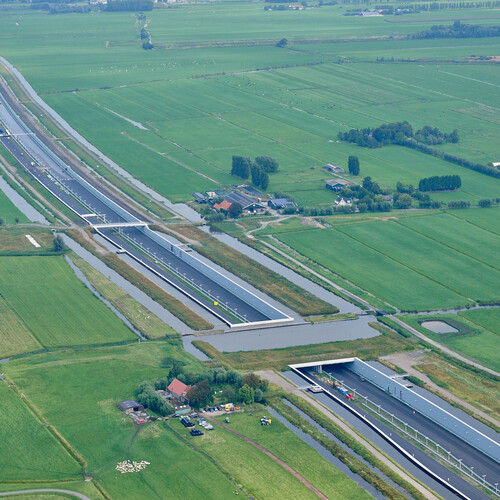
A4 Delft – Schiedam
First Honey Highway of Europe
The A4 Delft - Schiedam (A4DS) motorway, close to the city of Delft and Rotterdam, transects an area of outstanding natural beauty and a…
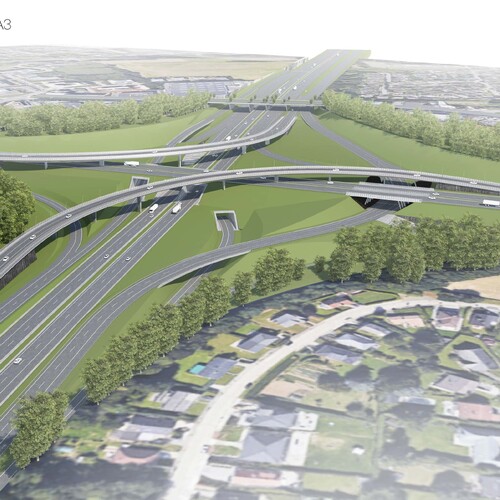
Research on adaptive and compact traffic intersections: the Ring around Brussels
Creating space for green and cycling networks
As is the case in many large cities, the R0, the ring-road around Brussels, is in need of drastic modernization. The plans seek to achieve…
